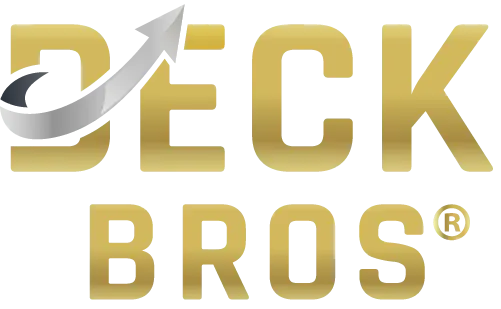Deck Makeover: Resurfacing Vs Replacement In Omaha, NE
Deciding between deck resurfacing and replacement is a common challenge for homeowners in Omaha, NE. A recent study shows that regular maintenance can extend a deck’s life by several years.
This article will guide you through choosing the best option for your deck makeover, focusing on cost-effectiveness and durability. Keep reading to find out more!
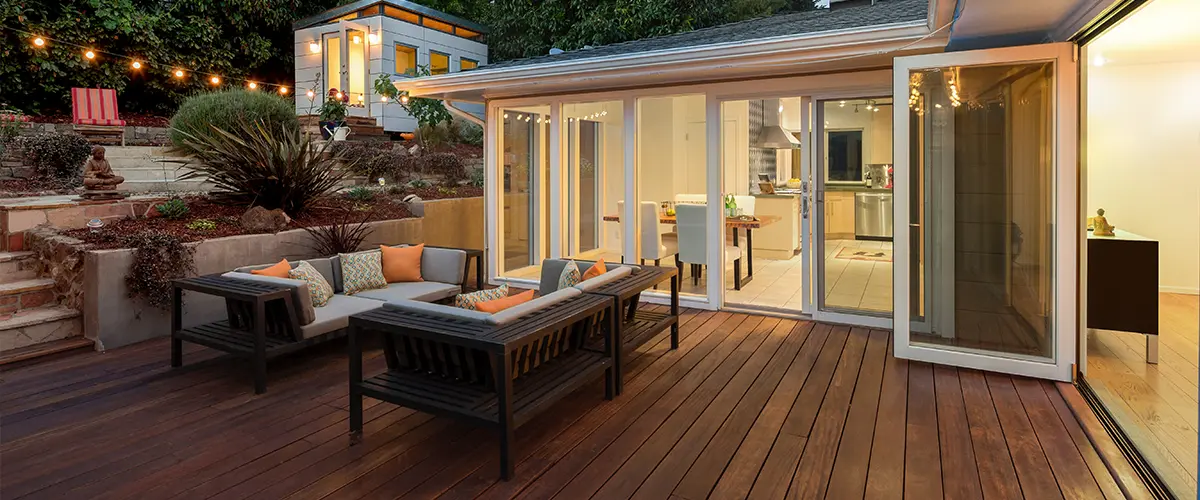
Deck Resurfacing vs. Deck Replacement: Pros and Cons
Cost Savings
Resurfacing your old deck can save a lot of money compared to a complete replacement. This method involves replacing only the worn-out or cracked boards and the deck surface, not the entire structure.
By fixing only what is necessary, you avoid the higher costs associated with tearing down and building a brand new deck from scratch.
Choosing materials like composite decking for resurfacing also contributes to savings over time. Although initially more expensive than wood, composite materials require minimal maintenance.
This means less spending on repairs and upkeep in the long run, making it a budget-friendly option for updating your outdoor space without sacrificing quality or appearance.
Reduced Construction Time
Choosing to resurface your deck instead of replacing it can significantly cut down on construction time. A full replacement involves taking apart the entire deck, which can take weeks.
Resurfacing usually only requires replacing the deck boards and railings, making it a much quicker process. This means you get to enjoy your updated outdoor space sooner without the lengthy disruptions a complete rebuild would entail.
This faster turnaround is especially appealing if you’re hosting an upcoming event or if time is of the essence. It allows you to swiftly improve your deck’s appearance and safety without sacrificing too much of your valuable time.
With reduced construction time, you move on to considering other important aspects like maintaining the original footprint of your existing structure.
Maintaining Original Deck Footprint
Keeping your deck’s original footprint saves time and hassle. You won’t need new permits or designs which can slow down the project. This approach lets you keep the existing structure of your wood deck, making it a quicker fix compared to building a new one from scratch.
It also means less disruption to your yard and surrounding landscaping.
However, this choice limits changes in size or style for your deck makeover. You work with what you have, making minor adjustments instead of major transformations. Deck owners should assess if their current layout meets their needs before deciding on resurfacing over replacement.
Next up, consider the limitations of resurfacing that might affect your decision.
Limitations of Resurfacing (Cannot Fix Structural Issues)
Resurfacing your deck has its limitations. It cannot resolve underlying structural issues such as a deteriorating ledger board, weakened beams, or rotting joists. While resurfacing can improve the appearance and functionality of the deck surface, it does not address the fundamental safety and integrity concerns that may be present in an aging deck.
This means that if your existing deck is plagued by structural problems, a complete replacement might be the more prudent choice to ensure long-term safety and durability.
When deciding between resurfacing and replacement for your deck makeover project, it’s crucial to evaluate these limitations carefully to make an informed decision about the best course of action for your home’s outdoor space renovation.
Potential for Longer-lasting Solution with Full Replacement
Choose complete deck replacement for a durable, long-term solution. Ensure structural integrity and safety by replacing old, worn-out components. Upgrading to new materials will extend the life of your deck, providing peace of mind and improved functionality.
Making an informed decision based on these factors will lead to a decking solution that suits your needs perfectly.
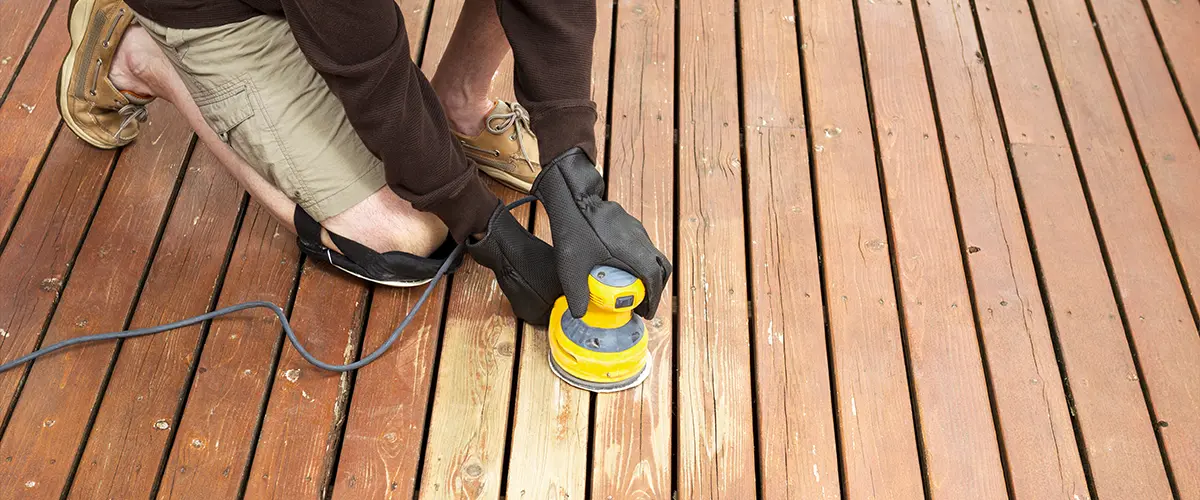
Best Deck Material Manufacturers
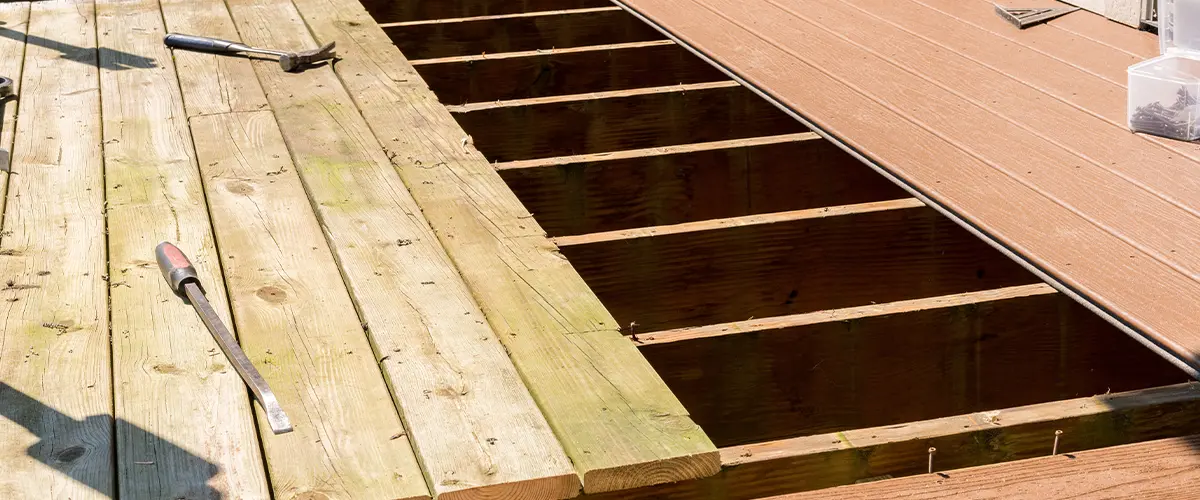
Making the Right Choice: Factors to Consider
Age and Safety of Current Deck
Consider the age and safety of your current deck. Inspect all components thoroughly, such as the ledger board, beams, joists, fascia board, flashing, posts, railing, and deck surface.
Ensure that all are in good shape and structurally sound to create a safer outdoor space for your family. If you notice cracked or splintered boards or loose railings during inspection , it may be time to decide between resurfacing or full replacement based on wear and tear.
Inspection of Deck Components (Ledger Board, Beams, Joists, Fascia board, Flashing, Posts, Railing, Deck surface)
Inspect the ledger board to ensure it is securely attached to the house. Check the beams for any signs of rot or structural damage caused by pests. Examine the joists for sagging, splitting, or corrosion.
Inspect the fascia board for any decay or water damage. Ensure that flashing is properly installed and intact to prevent water intrusion. Check the posts for stability and signs of rot at ground level.
Examine the railing for sturdiness and safety, paying attention to any loose or damaged sections. Evaluate the deck surface for splintering, warping, or deterioration of materials. Look for any protruding nails that may pose a safety hazard.
Analyzing these components is crucial in determining whether resurfacing or replacement is necessary based on the deck’s current condition and age.
Cost Considerations
When considering cost, it’s important to factor in the expenses for resurfacing versus full replacement. Resurfacing can be a more budget-friendly option as it usually requires less labor and fewer materials.
On the other hand, keep in mind that while full replacement may have a higher initial cost, it could result in long-term savings by preventing frequent repairs and providing an opportunity to upgrade to more durable materials.
Moreover, inspect your deck thoroughly to determine if simple repairs will suffice or if a complete overhaul is necessary. Don’t overlook the potential for increased safety and enhanced aesthetics when factoring in the costs of either option.
Desire for Updates or Upgrades
If you desire updates or upgrades to your deck, resurfacing may not fully meet your needs. Upgrading to new materials and features allows for a fresh look and improved functionality.
Incorporating modern deck material can provide durability and aesthetic appeal for an updated outdoor space, ensuring a safer choice for your home.
Consider the opportunity to restyle and renovate with newer deck boards, stairs, railing, or frame. This step is essential when focusing on remodeling and bringing nitty-gritty details up-to-date without compromising safety.
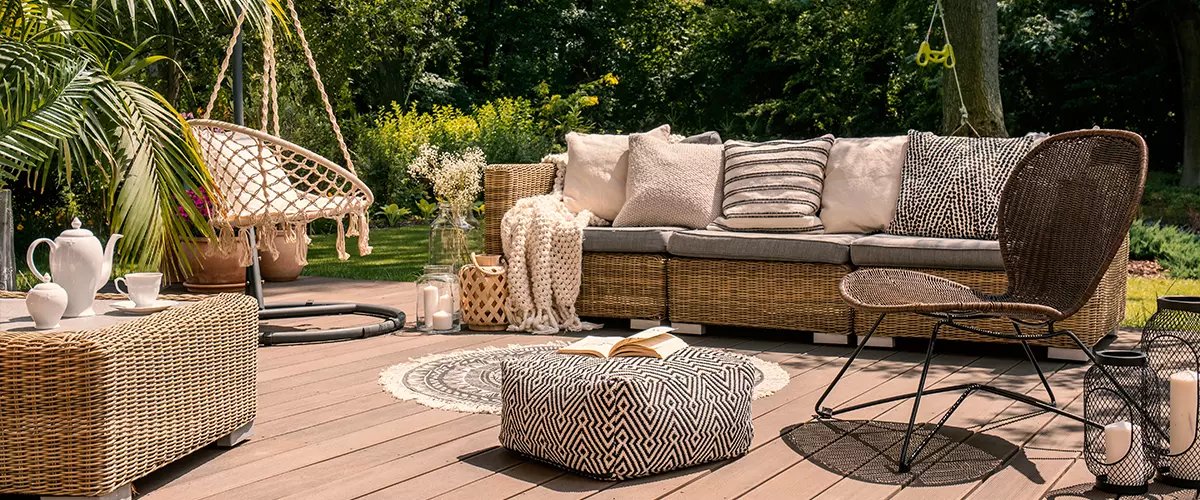
Deck Makeover: Resurfacing Vs Replacement In Omaha, NE - FAQs
Resurfacing involves replacing only the deck boards and railing, making your deck look brand new without altering the existing framing. Replacement means we tear down your old deck completely and build a new one from the ground up.
Resurfacing is best for decks that are structurally sound but need a facelift, while replacement is necessary when the entire deck, including its structure, is worn or damaged.
The first step is a thorough inspection. Check for signs of structural damage like rotted joists or a deteriorating ledger board attached to the house. If the main framework of your deck is structurally sound and your deck’s current condition mainly involves surface-level wear and tear, resurfacing might be the best option.
However, for older decks with underlying structural issues, a complete replacement is often more cost-effective in the long run.
Composite decking offers durability and minimal maintenance compared to traditional wood decks. It’s made from a blend of wood fibers and plastic, making it resistant to rot, decay, and insect damage.
Composite boards also come in various colors and textures that mimic natural wood. If you’re looking for eco-friendly decking that lasts longer without the need for frequent stain or paint, composite is a solid choice.
Yes, resurfacing your existing deck with pressure-treated lumber is possible and can be a cost-effective way to extend your deck’s lifespan while maintaining structural integrity.
Pressure-treated lumber is treated to resist rot, decay, and termite damage, making it a durable option for new deck boards, stairs, and railings.
Replacing your entire deck allows for a complete redesign of your outdoor space, the opportunity to correct any structural issues from scratch, and the option to use modern, durable materials like composite decking for minimal maintenance.
A brand new deck can increase your home’s value and provide a safer, more attractive space for relaxation and entertainment.
The time required for a deck makeover depends on the project’s complexity, whether it’s a resurfacing or a full replacement, and the materials used. Resurfacing projects can be relatively quick, often taking a few days to a week.
Full replacements or builds, especially with custom features, can take several weeks. We’ll provide a project timeline based on your specific needs and conditions.
Absolutely. During deck resurfacing projects, replacing old or worn-out railings is common to enhance safety and give your deck a completely new look.
You can choose from a variety of railing materials and styles that complement your new deck surface and overall home aesthetic.
The cost varies widely based on the size of your deck, the materials chosen (like eco-friendly composite boards vs. traditional wood), and the project’s complexity.
Resurfacing is generally less expensive than a full replacement because it requires less labor and materials. We provide detailed quotes after inspecting your deck and discussing your vision and budget, ensuring an informed decision based on your specific needs.
Why Choose Our Expert Team
Our team, with years of experience, stands at the forefront of decking services, embodying professionalism and expertise. Choosing the best ensures optimal outcomes and long-term savings. Ready to start? Contact us at (402) 369-5724.
